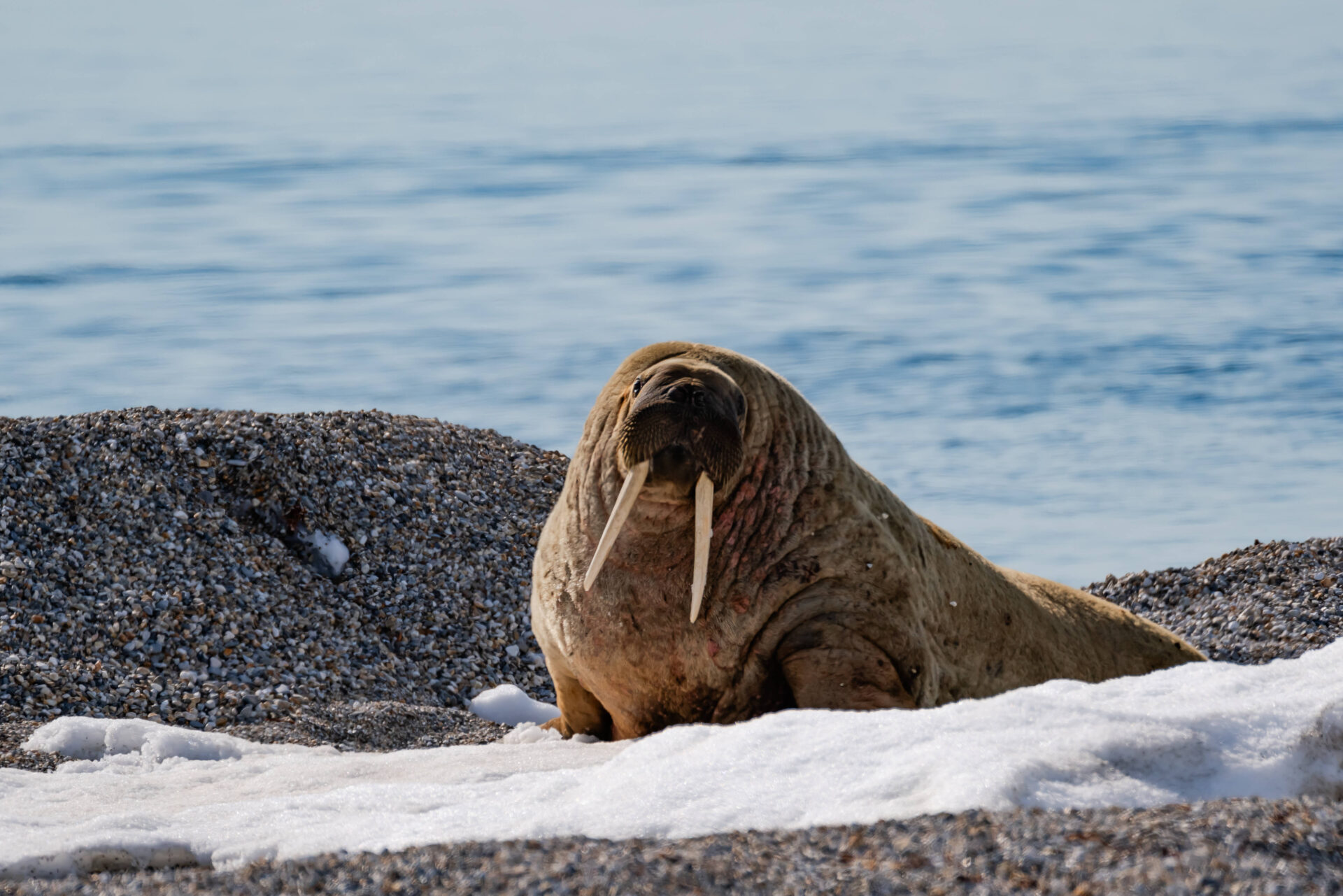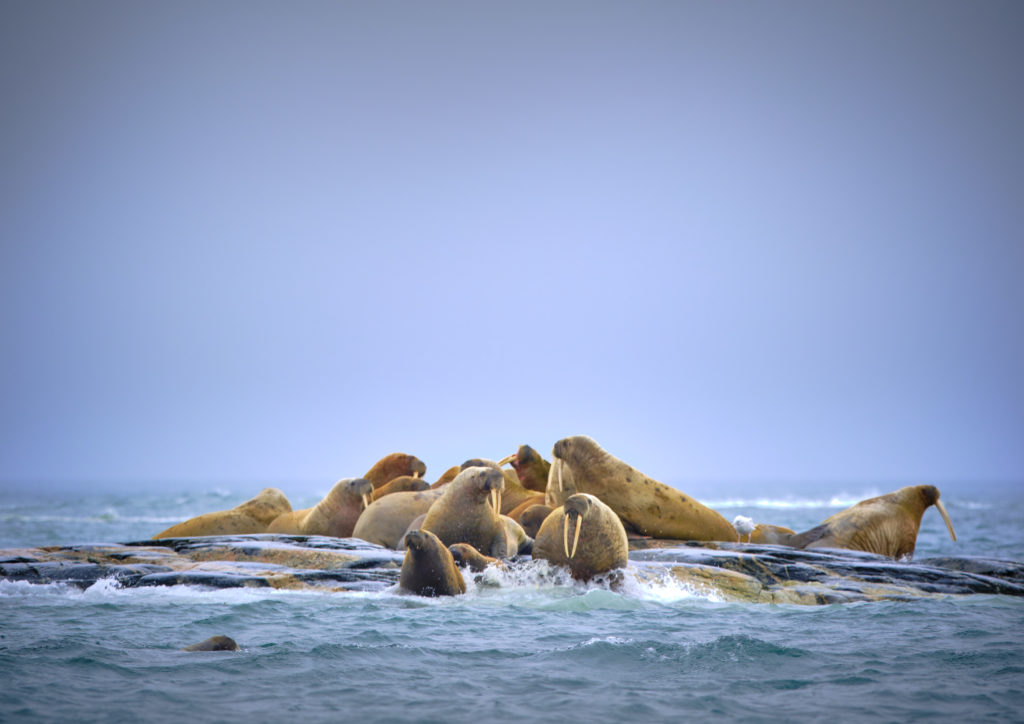In the icy depths of the Norwegian archipelago of Svalbard resides some of the most unique creatures in the animal kingdom. With its distinctive tusks and solid body, the mighty walrus is a stalwart of the Arctic, and here we’re looking into some of its fascinating features.

Read more: A Complete Guide to Spitsbergen
Introducing the walrus
The walrus, or odobenus rosmarus is one of the world’s largest pinnipeds – seal-like creatures with a streamlined body and four, flippered feet. Their body is covered by leathery skin with short fur, beneath which is the blubber that allows them to survive in the icy waters of the Arctic.
Walruses can grow up to 3.5 metres long, weighing in at as much as 1.5 tonnes – almost the same as a small car!
They have no external ears, and sport whiskers by their tusk, which are actually oversize canine teeth. Measuring almost up to a metre long, these tusks grow throughout a walrus’ life, which can last up to 40 years in the wild.
Another fascinating walrus trait is the ability to slow their own heartbeat, enabling them to live in frigid Arctic conditions.
Behaviour
Although walrus colonies are spread out between the Atlantic and Pacific Oceans, they are largely found in northern Atlantic regions and particularly around Svalbard and Greenland – meaning you’ll have a good chance of seeing some on an expedition with Aurora.
Walruses are classified as semiaquatic animals, spending most of their lives in the sea, but they can also haul themselves onto ice pans or onto land using their strong tusks. Their scientific name, odobenus rosmarus, actually translates to ‘tooth-walking seahorse’.
These social creatures are usually found lazing about in groups, and even swimming together, however, outside of breeding season male and females tend to stick to their own respective groups. If you spot a solitary walrus, it’s likely to be lone male.
Male walruses, also known as bulls, often watch over a harem of female walruses, called cows. If another male challenger approaches, the bull will defend his harem using his impressive tusks, bellowing and roaring.

Feeding and mating habits
The walrus’ diet consists mainly of bivalve molluscs, which includes various types of clams and mussels. However, larger male walruses are also known to eat other mammals such as seals and bird life.
Walruses mate in the Arctic winter, with pups being born around May. The walrus pups are mature enough to go diving after five months, but they will continue to drink their mother’s milk for up to three years. Once a calf walrus has been gradually weaned off their mother’s milk, they will join the larger groups of either male or females.
Waddling a fine line for survival
These wonderful creatures were once the primary target for hunters in Svalbard, who looked to profit from walrus hide, ivory and meat. After almost being hunted to extinction in the archipelago, walruses became a protected species in Norway in 1952.
The population is now slowly beginning to recover, with between 2,000-2,500 walruses believed to inhabit Svalbard.
I am the walrus
As with any wildlife encounters on your Arctic expeditions, always view wildlife with caution, Walrus are easily spooked, and you should always maintain a safe distance of at least 30 metres away.
Always listen to the direction of your tour leader, as they will know how to safely explore without disturbing the local walrus population.
You can have the opportunity to encounter these incredible beasts for yourself on a tour of the Arctic with Aurora Expeditions. To find out more about our voyages to Svalbard, Greenland and beyond view our brochures online, or get in touch with our friendly team.
Across the Arctic Circle
Discovery
Welcome to Aurora Expeditions’ Across the Arctic Circle expedition. On this expedition, Aurora combines three unique worlds on one unforgettable journey. From Stone Age villages to Iron Age forts, the...
15 Days
From AUD $17,196.00/pp
Jewels of the Arctic
Expedition
Explore Svalbard, a world of near-endless daylight, where polar bear sightings quicken your pulse, walrus haul out on sea ice and guillemot cries echo from towering cliffs. In East Greenland,...
13-15 Days
From AUD $20,905.75/pp
Svalbard Odyssey
Expedition
Enjoy the best of Svalbard, a world of near-endless daylight, where polar bear sightings quicken your pulse, guillemot cries echo from towering cliffs, and beluga whales rise from the sea....
12 Days
From AUD $17,365.50/pp

